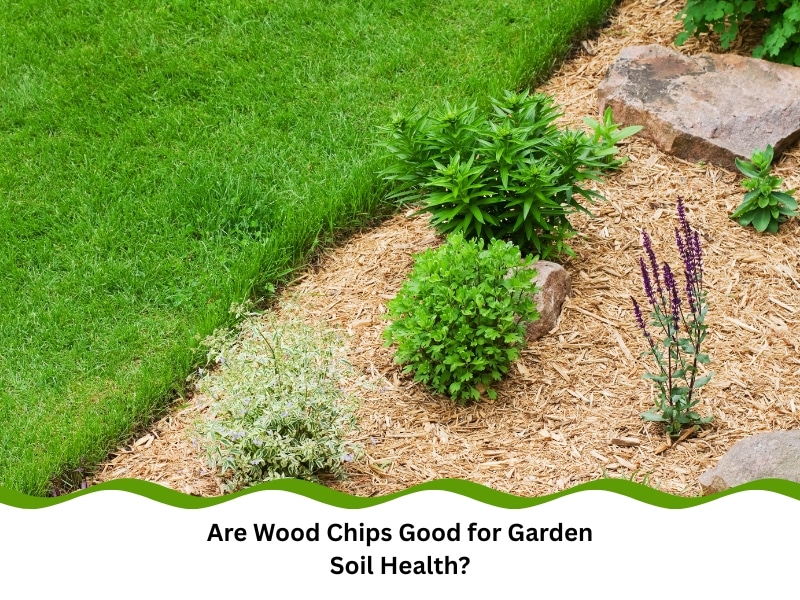Are your plants growing sluggishly despite regular watering and fertilising? The real culprit might be hiding in plain sight—your mulch. Wood chips can be a gardener’s secret weapon, but only when chosen and used with care. Done right, they support soil structure, regulate moisture, and deter weeds. Handled poorly, they invite pests, reduce nutrients, or stress plants. It’s a delicate balance—and one worth getting right if you want your garden thriving year‑round. This article explores the impact of wood chips on soil health and outlines steps to maximise their benefits without causing damage.
What problems arise when gardeners choose the wrong mulch?
Even experienced gardeners can encounter problems when their mulch selection falls short. Using the wrong type or applying it poorly can disrupt moisture levels, seedling development, and root health.
- Insufficient moisture retention: Thin or overly coarse mulch allows evaporation and uneven watering. Water seeps through quickly without staying where roots need it, especially in dry or sloped beds.
- Nitrogen lock-up Occurs When Fresh chips high in carbon draw nitrogen away from plant roots during decomposition. This starves seedlings and reduces vegetative growth during key stages.
- Allelopathic wood varieties: Some chips, like blackwood, inhibit germination due to natural chemical compounds. This may lead to patchy plant emergence and bare zones in ornamental beds.
- Inconsistent breakdown: Poor-quality mulch may decay unevenly, impacting soil texture. These inconsistencies create dry pockets that stress roots and reduce water efficiency.
In short, mulch that’s too raw or too rough creates more trouble than it’s worth.
How can poor-quality wood chips harm your plants?
Subpar wood chips don’t just underperform—they actively damage soil function and plant health. From pH imbalance to root stress, they introduce more cons than pros.
- Fungal or bacterial pathogens: Sourcing from diseased trees risks introducing harmful microbes into garden beds. These pathogens spread quickly in moist mulch environments.
- Inappropriate chip size: Large, woody chunks resist decomposition, block air flow, and repel root penetration. The result is poor root development and weaker anchoring.
- Microbial heat damage: Fresh, unaged mulch can overheat the surface zone, harming shallow roots. This thermal stress is especially damaging to young transplants.
- pH drift: Exclusive use of certain hardwoods shifts soil pH, reducing nutrient absorption. Your plants may show signs of deficiency, even with adequate fertiliser.
Symptoms can include stunted growth or yellowing leaves, even when watering seems sufficient.
Why might wood chip mulch create pest or disease issues?
Mulch is meant to protect—not invite—pests. But confident choices and mistakes can backfire fast. Poor maintenance and poor sourcing contribute to infestation and rot.
- Insect attraction: Unseasoned wood draws wood-boring pests like longhorn beetles or termites. These pests may then migrate to nearby timber structures.
- Moisture traps: Thick, damp layers create habitat for fungal spores and pathogens. This dampness slows root respiration and encourages mould growth.
- Snails and slugs: Excess moisture also welcomes soft-bodied pests that chew seedlings overnight. They thrive under mulch blankets and are hard to spot early.
- Stem rot risk: Piling chips too close to plant bases traps moisture and reduces airflow. This weakens stems and increases disease risk in wet seasons.
Over time, these conditions increase the likelihood of pest pressure or disease spreading throughout beds. Understanding why garden soil types affect mulch performance and plant health is crucial, as improper pairings of mulch and soil amplify risks.
How do you select the best wood chips for garden health?
With many options out there, it’s tempting to grab whatever’s cheap. But chip quality makes all the difference. These tips help you lock in what works.
- Use aged or composted wood chips: These break down safely and avoid nitrogen depletion. Proper composting also reduces unwanted pests and chemical residues.
Check the wood source: Untreated hardwoods from local suppliers offer long-term structure and nutrient value. They’re less likely to harbour invasive seeds or diseases. - Look for variety in particle size: A blend improves both moisture retention and airflow. Fine chips slow water loss, while coarse chips keep soil from compacting.
- Inspect for contaminants: Chips should be free from weeds, pathogens and treated timber. This protects your soil and the surrounding environment.
This approach aligns with expert recommendations for enhancing soil health through composted mulch solutions, confirming that composting improves both wood chip safety and soil integration.
Feature | Why It Matters | What to Look For |
Aged/composted chips | Prevents nitrogen lock-up | Dark colour, crumbly feel |
Untreated hardwoods | Stability and natural breakdown | Local, disease-free wood types |
Varied chip size | Optimises moisture and aeration | Mixed fine and coarse particles |
Weed/pathogen free | Protects soil from contamination | Clean, certified supply |
Making the correct choice up front prevents ongoing maintenance headaches.
How should you apply wood chips to maximise soil benefits?
Even great chips underperform when spread incorrectly. Proper layering is key to unlocking moisture control and nutrient stability.
- Clear the surface: Remove weeds and level soil before application. This ensures chips contact the ground evenly and suppress regrowth effectively.
- Add a base compost layer: This improves soil-nutrient exchange beneath the mulch. It also helps retain heat in cooler months.
- Spread chips evenly at 5–7 cm depth: Enough to cover, but not smother. Too thick creates drainage issues; too thin dries out fast.
- Leave space around plant stems: A 5–10 cm gap reduces disease and rot risks. This encourages better airflow and prevents fungal contact zones.
Following practical mulching approaches to support plant growth ensures the chips perform their best without compromising root health.
What maintenance tips ensure long-term success?
Even top-quality mulch needs upkeep. With a bit of routine care, you’ll protect soil structure and avoid common pitfalls.
- Refresh every 12–18 months: This maintains depth and keeps the mulch active. Older mulch starts breaking down into fine material too quickly.
- Fluff or turn yearly: Loosens compaction and restores air flow. It also helps you spot hidden pests or rot underneath.
- Check nutrient levels regularly: A soil test reveals if supplements are needed. This helps correct imbalances before they affect plant growth.
- Apply organic fertiliser or compost: Supports microbial life beneath the mulch layer. It also enhances water retention and nutrient holding.
- Reduce excessive buildup: Too much mulch traps water and invites rot. Keep mulch loose and dry on top to prevent thatch.
It also helps to consider soil protection with crushed stone; choosing the right combination can reduce how often you need to top up or turn over your beds. This keeps the soil balanced and your plants vigorous.
Final thoughts
Done right, wood chips become more than a mulch—they’re a long‑term asset. They help you build healthier soil that’s water‑wise, weed‑resistant and structurally sound. If sourcing and applying mulch feels daunting, discover how A1 Gardening & Landscaping Sydney selects mulch that suits your needs. This guidance can help simplify your decisions without trial and error.



